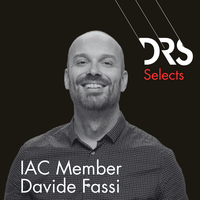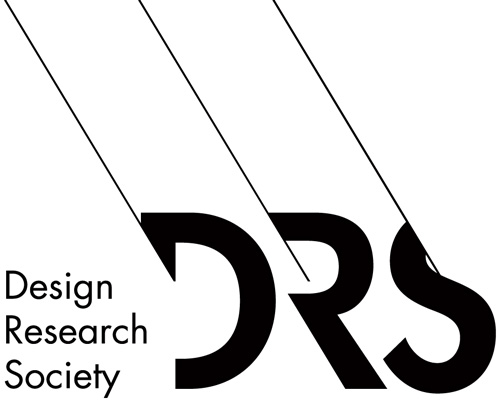
Please introduce yourself, your role in the DRS and your research.
I am a Full Professor in Design at Politecnico di Milano, where I coordinate the Polimi DESIS Lab, part of the international DESIS network (Design for Social Innovation and Sustainability). Within this role, I focus on exploring how design can drive social innovation and sustainable practices at local and global scales.
I am a member of the International Advisory Council of the Design Research Society (DRS) and part of the board of its Special Interest Groups (SIGs). Through these roles, I work to foster collaboration across disciplines and promote initiatives that advance design research worldwide.
Additionally, I serve as the scientific coordinator of Off Campus Nolo, a collaborative initiative in Milan that integrates research, education, and local engagement to address urban and societal challenges.
My research spans spatial and service design, with a particular focus on community building, neighborhoods, and leveraging design to create sustainable and resilient systems. I am actively involved in the OnFoods research project, which examines innovation and sustainability in food systems, as well as SOSpesa+, a project dedicated to co-managing food supply chains and enhancing citizen participation in the Nolo neighborhood of Milan.
Being part of the DRS and coordinating the Polimi DESIS Lab provides unique opportunities to collaborate within an international network of researchers and practitioners, contributing to meaningful advancements in design for society.
What do you see as the benefits of being involved with the DRS and how can those interested become more involved in the Society?
Being involved with the DRS offers numerous benefits. First, it provides access to a vibrant, international network of researchers and practitioners in the field of design. This enables the exchange of innovative ideas, methodologies, and practices across diverse cultural and disciplinary perspectives.
Additionally, the DRS supports professional growth by offering platforms such as conferences, publications, and Special Interest Groups (SIGs), where members can actively engage in advancing design research. These opportunities not only help build expertise but also foster meaningful collaborations that can lead to impactful projects and publications.
For those interested in becoming more involved, I would recommend starting by participating in a DRS SIG that aligns with their research interests. Attending or presenting at DRS conferences is another excellent way to engage with the community. Moreover, volunteering for initiatives or committees can provide deeper insights into the society’s workings and open doors to further involvement. The DRS thrives on active participation, and I encourage anyone interested to reach out, contribute their perspectives, and help shape the future of design research together.
Five Selections from the DRS Digital Library
Margolin, V., and Margolin, S. (2002) A ‘social model’ of design: issues of practice and research, in Durling, D. and Shackleton, J. (eds.), Common Ground - DRS International Conference 2002, 5-7 September, London, United Kingdom. https://dl.designresearchsociety.org/drs-conference-papers/drs2002/researchpapers/55
At the beginning of the 00’s, Margolin proposed an alternative 'social model' of design through this paper, contrasting the traditional market-oriented approach. It presents a practical methodology for collaborative social service interventions, highlighting the active role of designers in addressing the needs of vulnerable communities and advocating for a multidimensional perspective in social design research.
Morelli, N. (2002) The design of product/service systems from a designer’s perspective, in Durling, D. and Shackleton, J. (eds.), Common Ground - DRS International Conference 2002, 5-7 September, London, United Kingdom. https://dl.designresearchsociety.org/drs-conference-papers/drs2002/researchpapers/56
As a professor in Product Service System Design at the Politecnico di Milano, this article is relevant to me since it discusses for the first time (2002) the evolving role of designers in developing product-service systems (PSS), highlighting methodological challenges and tools. By exploring a concrete example (an urban telecentre), it emphasizes the need to expand designers' competencies beyond product creation to include technological, cultural, organizational, and social dimensions, contributing significantly to the discourse on design methodology in PSS innovation.
Lee, Y. (2006) Design Participation Tactics: Redefining User Participation in Design, in Friedman, K., Love, T., Côrte-Real, E. and Rust, C. (eds.), Wonderground - DRS International Conference 2006, 1-4 November, Lisbon, Portugal. https://dl.designresearchsociety.org/drs-conference-papers/drs2006/researchpapers/60
Dealing with participatory design I found this paper very interesting since it critically redefines user participation in design, proposing a typology that bridges the gap between designers and users. It categorizes participation into innovation, necessities, collaboration, and emancipation, advocating for designers to shift roles from experts to facilitators who collaboratively develop design tactics with communities. This perspective significantly contributes to the evolving discourse on participatory design practices.
Koskinen, I. (2016) The Aesthetics of Action in New Social Design, in Lloyd, P. and Bohemia, E. (eds.), Future Focused Thinking - DRS International Conference 2016, 27 - 30 June, Brighton, United Kingdom. https://doi.org/10.21606/drs.2016.161
Dealing with design for social innovation means to me to consider even the aesthetic side of it. Here, Koskinen explores the understudied topic of aesthetics in social design through three distinct aesthetic approaches—agonistic, convivial, and conceptual—and illustrates their practical implications through case studies, enriching discussions about how aesthetic considerations shape and influence social design practices.
Fassi, D., and Vergani, F. (2022) Designing proximity with situated stakeholders, in Lockton, D., Lenzi, S., Hekkert, P., Oak, A., Sádaba, J., Lloyd, P. (eds.), DRS2022: Bilbao, 25 June - 3 July, Bilbao, Spain. https://doi.org/10.21606/drs.2022.695
This paper was presented after a long in-field research and observations done with my research team aiming at demonstrating how neighborhoods can serve as experimental labs for participatory design focused on livability and proximity. It highlights the importance of engaging local stakeholders actively in co-design processes, using the example of a community-driven initiative in the Nolo neighborhood in Milan. The study provides practical insights into fostering civic awareness and validating collaborative solutions for urban and social improvement.
